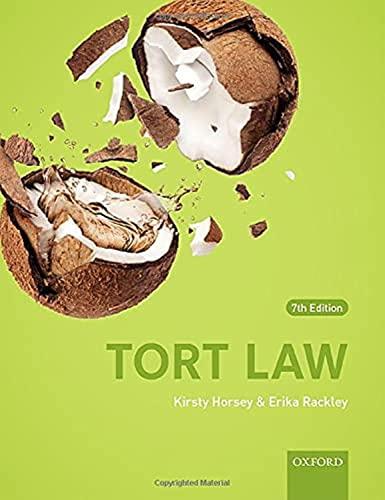Question
Kenneth Kinney and Kathleen Gallagher were in a personal relationship during which they agreed to purchase a house. While the couple did buy the house
Kenneth Kinney and Kathleen Gallagher were in a personal relationship during which they agreed to purchase a house. While the couple did buy the house together, Kinney's name was not on the deed because he was participating in a tax repayment agreement with the IRS due to previously owed taxes. The couple separated in January, 2005.
In August 2005, Kinney filed an action against Gallagher in New York State Court, alleging that he and Gallagher had orally agreed to put Kinney's name on the deed because he had allegedly contributed $10,000 for the down payment of the house.
In October 2007, Gallagher filed a voluntary Chapter 7 petition with the Bankruptcy Court. She listed Kinney as a holder of an unsecured claim and her attorney instructed Kinney's attorney to terminate the state court action because of the automatic stay established by the bankruptcy court. Although Kinney was listed on the schedule of debts, he did not file a claim for assets during the bankruptcy proceeding and therefore did not receive any distribution of funds from the estate.
In January 2008, Gallagher was granted a discharge of debts, and the bankruptcy case was eventually closed in December 2011 after the trustee completed the administration of estate assets. Despite the discharge of debts, Kinney continued the state court action and on October 3, 2013, Gallagher filed a motion for contempt against Kinney, asserting that the continuation of the state action was a violation of the Chapter 7 discharge. Kinney argued that he was not a creditor because his action was based on a constructive trust for the return of property.
[Kenneth C. Kinney v. Kathleen M. Gallagher, 524 B.R. 455; 2015 U.S. Dist.]
The court explains the four elements of a constructive trust. What are they? In what scenarios would a constructive trust based on these elements be relevant in a principal-agent relationship? How did the court rule and why?
Step by Step Solution
There are 3 Steps involved in it
Step: 1

Get Instant Access to Expert-Tailored Solutions
See step-by-step solutions with expert insights and AI powered tools for academic success
Step: 2

Step: 3

Ace Your Homework with AI
Get the answers you need in no time with our AI-driven, step-by-step assistance
Get Started


